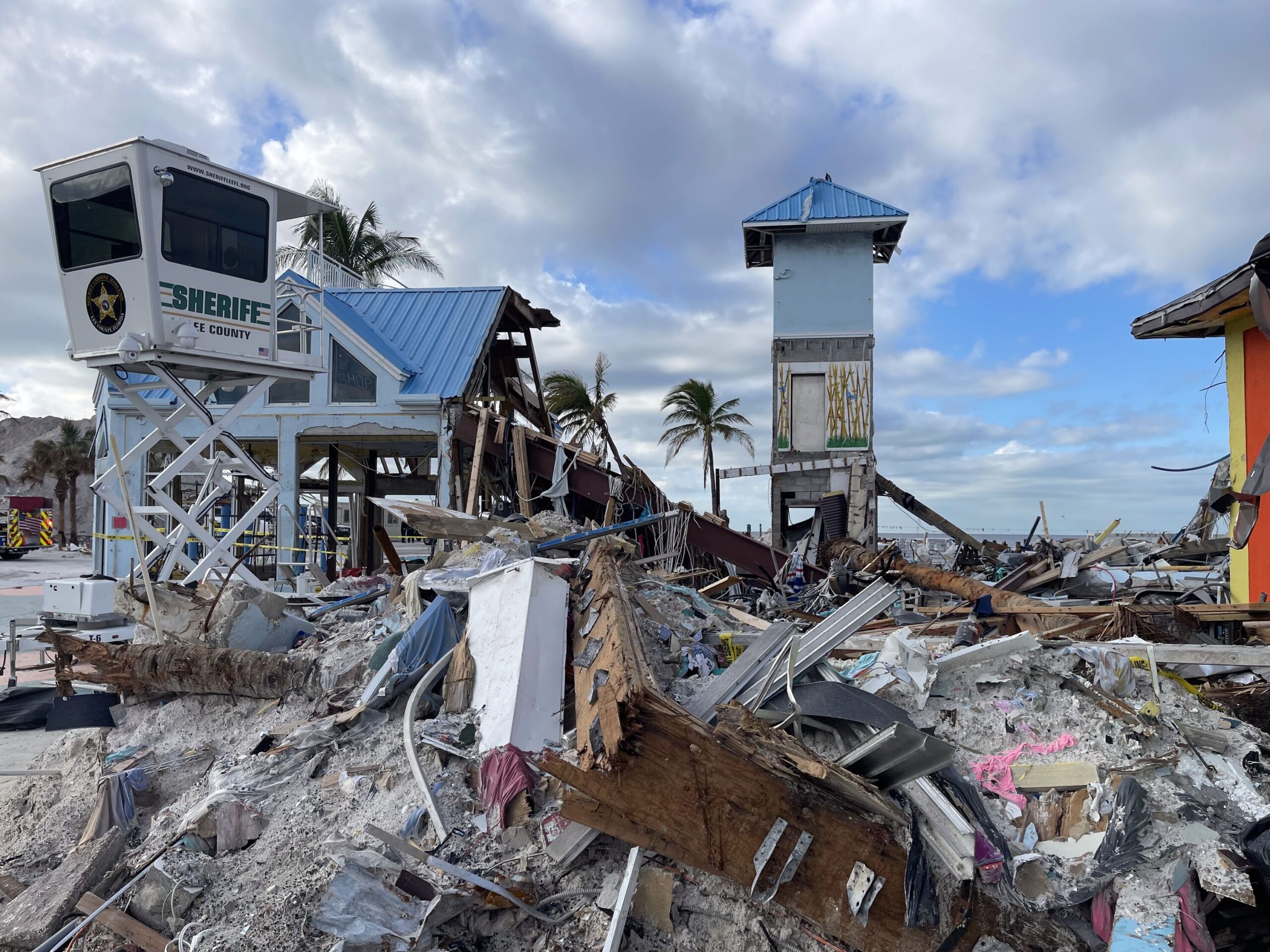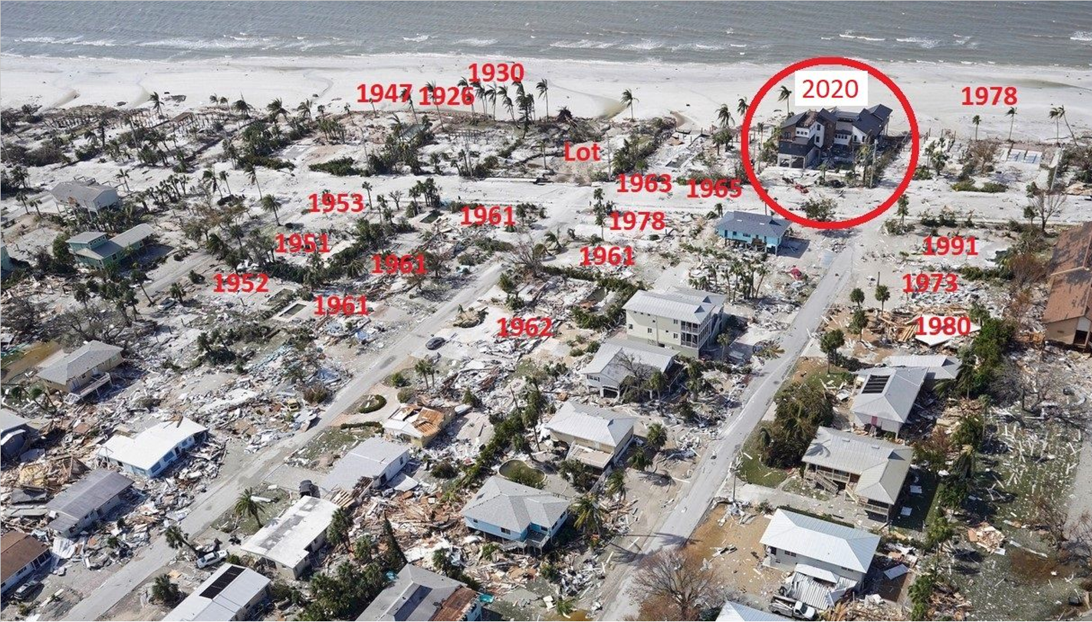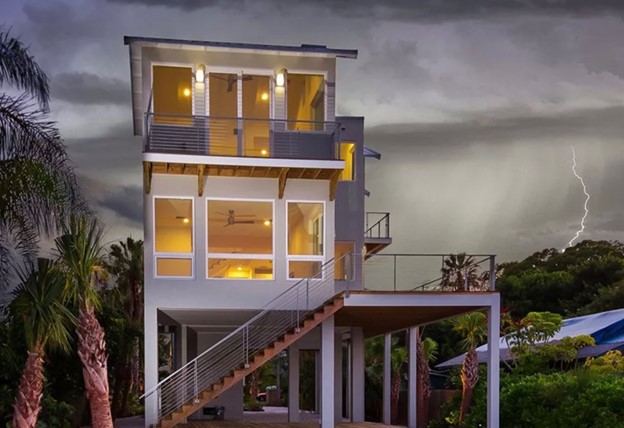As hurricane season approaches, savvy Florida homeowners are already taking steps to prepare for the worst.
Hurricane Preparedness Week is the perfect time to start taking pre-season precautions. Whether you’re new to the area or revamping your home, there are plenty of ways to safeguard your property and minimize potential damage.
To be fully prepared and confident in facing the unpredictable challenges of hurricane season, it’s important to focus on the most critical areas ahead of time. This guide is here to help, providing all the essential information you need about the Floridian environment, our history of hurricane preparedness, and practical tips to protect your home or business as much as possible.
Preparedness is Key

Florida homeowners know how to brave severe storms and weather but staying prepared is key to mitigating the damage during hurricanes and tropical storms. We have a few supplies and strategies to keep in mind to ensure you’re as protected as possible
Damage can come from two main sources during hurricanes: high winds and flooding. Hurricane-force winds are stronger than you think. They are able to pick up heavy pieces of debris easily and turn them into missiles with the ability to smash through windows, windshields, and more.
If you’re not sure your home is prepared for a hurricane, the following list can help get you there:
- Make sure your home is in good shape and do a walkthrough. Inspect windows and doors for any damage or potential for air and water penetration. Be sure they meet building codes and can withstand harsh weather. Even before the tropical storm season officially arrives, you can take several preventative measures, called ‘home hardening,’ to fortify your home’s weak points and mitigate significant damage. Areas of the home to pay careful attention to include the roof, exterior doors and windows, and the garage door.
- Walk around your yard to check that tree branches and other plants won’t cause damage to the home. Remove any debris or anything close to the home that could get picked up by strong winds.
- While you’re spending time outside, check with your community around you and how they’re preparing. “Talk to your neighbors about how you can work together during an emergency,” states Ready.gov. “Find out if anyone has specialized equipment like a generator or expertise such as medical knowledge that might help in a crisis.”
- Before hurricane season starts, stay up to date with your local weather updates on a regular basis. The National Hurricane Center recently announced changes to its forecasting and expanded its Tropical Weather Outlook to seven days to provide more time for preparation.
- Have a plan and think through decisions about evacuation before the storms hit. Review where local safety shelters and emergency centers are located in your region and check out evacuation routes to plan ahead.
- If you are sheltering in place, make sure you have plenty of water. Fill bathtubs with water and ensure you have filled extra bottles for drinking. The average person uses one gallon of water per day.
- Have plenty of supplies on hand. Look through your supplies to determine if you need to replenish any food items (or batteries) that might be expired. Keep your devices charged and stay tuned in to local radio stations. Fill up with gas before evacuation orders are in place.
These preparations can be made well before hurricane season. “Since you do not know where you will be when an emergency occurs, prepare supplies for home, work, and cars,” explains Ready.gov.
Did You Know?
- Hurricane Ian had winds of 150 mph when it made landfall in Florida as a Category 4 hurricane. It was the fifth-strongest storm to ever hit the United States.
- Hurricane Ian destroyed 8,000 homes and damaged up to 68,000 other homes in Cuba. It then went on to destroy 5,000 homes and damage 30,000 others in Florida.
- Hurricane Ian produced at least $50-$68 billion in property and infrastructure losses, and $112 billion in damage overall, making it one of the costliest natural disasters in the history of the United States and the costliest storm to ever hit Florida.
Understanding Standards for Hurricane Classification
PGT – Hurricane Protection and Preparedness
The Saffir-Simpson Hurricane Wind Scale is the industry standard used to measure potential damage to communities impacted by storms, categorized by level of severity. There are five distinct categories:
National Hurricane Center And Central Pacific Hurricane Center
Category 1
Expect winds up to 95 mph and some power outages during Category 1 hurricanes. You’ll likely see home and building damage, along with flooding around the coast.
Category 2
This category features winds between 96-110 mph and can cause total power and potable water outages. These storms can completely destroy mobile homes and uproot trees. Street signs, roofs, and piers will experience damage.
Category 3
With winds between 111-129 mph, we start to see more substantial, region-wide damage and weeks-long power outages. People will not have access to clean water, and any homes without a foundation will be wiped out.
Category 4
A Category 4 hurricane means total power and water loss in even larger regions. With winds of 130-156 mph and flooding, most trees and mobile homes will be devastated. The impact and outages can last weeks, and coastal areas will see shoreline erosion.
Category 5
Category 5 storms are extreme hurricanes — the impact of damage can extend over months, and many homes will be destroyed to the extent that rebuilding is impossible.
Florida Building Codes & Requirements
After the ruin of Hurricane Andrew in the 1990s, the Miami-Dade building codes were developed to ensure higher standards of exterior products and hurricane preparedness in Florida. All window and glass door products installed in Florida today must be certified by a third party agency and products located in wind-borne debris regions must also be tested and certified to meet hurricane impact testing criteria. Some manufacturers, like PGT Custom Windows and Doors, have their engineers test all of the products in an RND fashion prior to certifying them, ensuring a proper design that meets or exceeds current codes.
The code changes put into place after each Florida hurricane have helped shape the code into what it is today, saving countless lives and billions of dollars in damages.

Here at PGT, we were a partner in developing these state-wide guidelines for exterior protection, and we’re a leader in the impact category with nearly every product approved with a Miami-Dade NOA. These certifications are still regarded as the gold standard for hurricane and impact protection.
Following Hurricane Andrew in 1992, PGT helped write some of the most stringent impact code requirements in the world. One of the biggest improvements for buildings in newer building codes — especially in vulnerable coastal areas — is the elevation standards. Most of the habitable areas of a building in a hurricane zone are elevated above grade so when a surge comes in, the water can move through the underside of a structure without damaging it.
Margaritaville Hollywood Beach Resort directly on the beach in Fort Myers, FL withstood Hurricane Ian. How? Every hotel room had PGT WinGuard Aluminum SGD770 Sliding Glass Doors installed, concrete frames were located on each floor and the top three habitable floors were above grade. There was no deformation, no structural failures and the building is standing strong to this day.
We cannot prevent devastating events like Hurricane Ian, but we can learn from previous disasters to help create safer, stronger structures to lessen the impact. Our team at PGT saw the need for innovation when it came to protecting homes and families in hurricane-prone regions — this led us to design our WinGuard® impact-resistant windows.
Why Choose Impact Windows and Doors?
Our impact windows and doors are designed to resist shattering when struck. Engineered with an interlayer that is bonded between two panes of glass to form an incredibly strong glass “sandwich”, laminated glass, that functions as a single pane. The durable interlayer stays intact even upon serious impact, protecting against the most extreme weather elements. They also provide increased home security, noise reduction, and convenience when preparing for a hurricane.

Climate disasters and severe weather are a reality that Florida homeowners face, and it’s imperative that homes can stand up to harsh weather over time. “Experts emphasize that it’s never too early to organize a hurricane-safety strategy, and it’s not just residents who live directly along the coast that must be mindful,” reports WGCU.
The doors and windows that are installed on homes today must be tested for protection from hurricane impact and wind damage. And choosing these windows and doors for your home isn’t just additional security when there’s a storm — they can also increase energy efficiency and lower premiums on insurance.

“Don’t judge what the last one did on what the next one may do just because it hit further south. We tell people every storm is different; every track is different,” explains Sarasota County’s Chief Ed McCrane. Hurricane season is always around the corner in the Sunshine State, and homeowners can build a plan for protection by staying prepared year-round.
At PGT Custom Windows and Doors, our WinGuard® hurricane impact products help to guarantee your home’s protection and give homeowners around the world a sense of security needed for future storms.
Our team of highly reliable experts has built a reputation for protecting homes and families from some of the toughest conditions on earth, and our products are designed to defend for years to come. Plus, with our impact-resistant windows and doors, you don’t have to sacrifice safety for aesthetics — we provide both to your utmost satisfaction.
To learn more about our products and how to best prepare for the upcoming hurricane season, contact your local dealer — we look forward to helping you create a safe home for you and your family.





